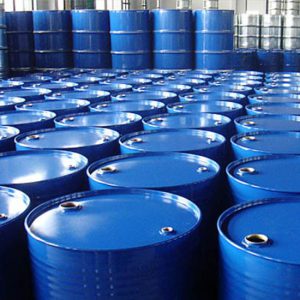Catalyst C102 (Chelated Tin U-220H)
Overview.
Name: Catalyst C102 (Chelated Tin U-220H)
Synonyms: Catalyst C102, Chelated tin, U-220H, Bis(acetylacetonate)dibutyltin, MS adhesive catalyst, High efficiency catalyst for silicone adhesive, High efficiency catalyst for silane modified polyurethane, Tegokat TK226, TIB KAT226, Synthetic polyethylene catalyst, SPUR catalyst
Catalyst C102 (chelated tin U-220H) Catalyst C102 Chelated tin U-220H Bis(acetylacetonate) dibutyltin MS adhesive catalyst High-efficiency catalyst for silicone adhesives High-efficiency catalyst for silane-modified polyurethane Tegokat TK226 TIB KAT226 Synthetic polyethylene catalyst SPUR catalyst

I. Overview.
Catalyst C102 is a highly active organotin chelated by imported advanced technology, its activity and catalytic speed is much higher than that of dibutyltin laurate. It is widely used in silicone, silane-modified polyurethane, MS adhesive and other industries. For some special products that require fast curing speed, it can be cured quickly, which is better for later construction. (Note: the product can not be in contact with water, do not water bath)
II. Physical properties.
Chemical name: bis(acetylacetonate) dibutyltin
Properties: light yellow oily liquid.
Tin content: 26%-28%
Relative density: 1.21-1.23 (30℃)
Solubility: insoluble in water, soluble in organic solvents
Viscosity (mPa.s): 10-50 (30°C)
Melting point / freezing point :15-25 °C
Flash point :167 ℃
III. Uses.
1、This product is suitable for two-component polyurethane cross-linked coatings for automotive paint, industrial paint, table paint.
2、This product is used for room temperature vulcanization of silicone rubber, especially for single-component silicone rubber, its vulcanized products in the sealed state of heat will not have the phenomenon of return to the original.
3, the product can be cured faster than dibutyltin acetate, to overcome the shortcomings of dibutyltin acetate taste, and good late storage.
IV. Storage and transportation.
Store at room temperature, away from light, in a ventilated and dry place, sealed
Store in a sealed container in a cool, dry place. The storage area must be locked and the key must be given to the technical experts and their assistants for safekeeping. The storage area must be kept away from oxidising agents and away from water.
Packaged in universal plastic and sprayed iron or glass containers and transported in accordance with general chemical management regulations.
V. Packaging.
Packaging: It is advisable to use glass containers, plastic containers and metal vessels resistant to chlorine corrosion for storage and sealing. Store in a cool, dry place, keep the container sealed and avoid contact with oxides. Do not breathe dust and avoid contact with skin and mucous membranes. No smoking, eating or drinking in the workplace. Shower and change clothes after work. Store contaminated clothing separately and wash before use. Maintain good hygiene practices.


Comments